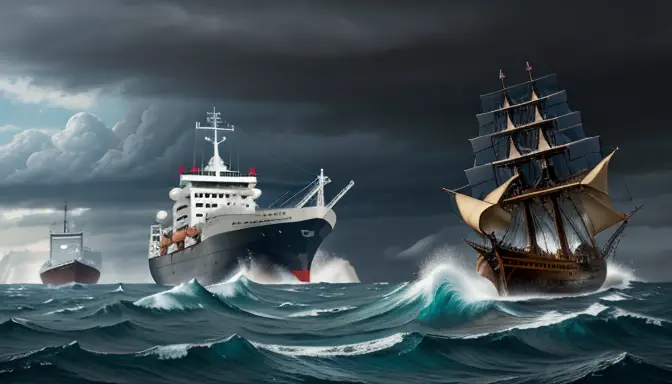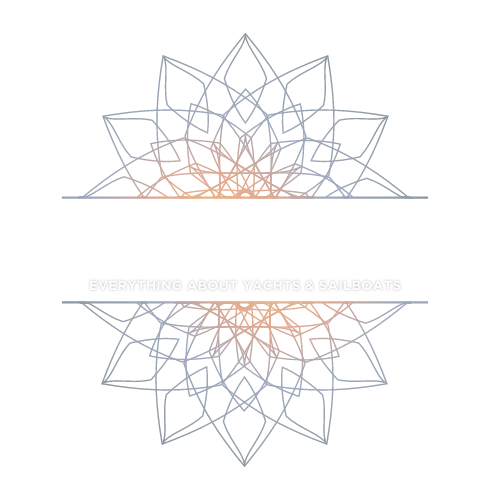Exploring the details and aftermath of the collision between the vessels Svea and Topaz is like unraveling a complex puzzle with high stakes. The clash of these maritime giants sent shockwaves through the industry, leaving a trail of destruction and lessons in its wake. The collision, akin to a thunderous explosion in the calm sea, highlighted the fragility of human error in the face of nature’s unpredictability. As we delve deeper into this incident, we uncover a narrative of cause and effect, accountability, and the resilience of safety protocols. Join us on this deep dive into the heart of the Svea and Topaz collision, where every detail holds a crucial piece of the puzzle.
Vessel Overview
An in-depth look at the vessels involved in the collision, the Svea and Topaz, reveals fascinating details about these maritime giants. The Svea, a robust cargo ship with a long history of successful voyages, boasted impressive specifications including a carrying capacity of 10,000 tons and a top speed of 25 knots. On the other hand, the Topaz, a sleek tanker known for its efficiency in transporting oil across the seas, had a capacity of 150,000 barrels and a top speed of 20 knots. Both vessels played crucial roles in the maritime industry, carrying goods and resources essential for global trade.

Cause Analysis
When delving into the cause analysis of the collision between the vessels Svea and Topaz, it becomes evident that multiple factors contributed to this unfortunate incident. Human error stands out as a primary factor, with misjudgments in navigation and communication playing a crucial role. Additionally, technical malfunctions in the onboard systems of either vessel could have exacerbated the situation, leading to a higher risk of collision. Weather conditions, such as poor visibility or rough seas, might have also played a part in the events leading up to the impact.
Moreover, the lack of adherence to established maritime protocols and safety measures could have further escalated the risk of a collision between Svea and Topaz. Inadequate training of crew members, insufficient supervision, or fatigue-related issues could have impaired the decision-making process onboard, contributing to the chain of events that culminated in the collision. By thoroughly examining these factors, we can gain valuable insights into how such incidents can be prevented in the future.
Collision Sequence
When the vessels Svea and Topaz found themselves on a collision course, the sequence of events unfolded rapidly, leading to a catastrophic impact. The crew of both ships were navigating through challenging waters, with communication playing a crucial role in avoiding disaster. However, a series of misjudgments and errors in decision-making ultimately culminated in a collision that shook the maritime industry.
The collision sequence began with a misinterpretation of signals between the vessels, causing confusion and delay in executing evasive maneuvers. As the ships approached each other, attempts to alter course were made, but it was too little, too late. The moment of impact was like an explosion, reverberating through the calm sea and sending shockwaves of alarm across the maritime community.
Legal Implications
When it comes to the legal implications of the Svea and Topaz collision, the aftermath of such a maritime incident is not just limited to the physical damage caused. Investigations are launched, liability is disputed, insurance claims are filed, and legal actions are taken to address the consequences of the collision. The legal framework surrounding maritime accidents is complex, involving international laws, jurisdictional issues, and intricate liability agreements.
In response to the collision, legal teams representing the stakeholders of both vessels engage in negotiations, mediation, and potentially litigation to resolve disputes and determine accountability. The legal implications extend beyond just financial compensation, as they also involve upholding maritime laws, ensuring justice is served, and setting precedents for future incidents.
Environmental Impact
When the vessels Svea and Topaz collided, the environmental impact was profound, extending far beyond the immediate crash site. The collision resulted in a significant oil spill, endangering marine life and polluting the surrounding waters. Cleanup efforts were immediately initiated to mitigate the damage and prevent further ecological harm. The spill had a lasting effect on the marine ecosystem, disrupting the delicate balance of the underwater world. Marine organisms were directly impacted, facing potential harm from the oil contamination. The incident served as a stark reminder of the importance of environmental protection and the need for stringent regulations to safeguard our oceans and marine life.

Safety Regulations
When it comes to maritime safety, regulations play a crucial role in ensuring the well-being of vessels, crew members, and the marine environment. The incident involving the Svea and Topaz collision has underscored the importance of robust safety protocols in preventing such accidents. Safety regulations encompass a wide range of measures aimed at mitigating risks and enhancing operational standards at sea. These regulations cover areas such as navigation rules, equipment requirements, emergency procedures, and crew training.
In response to the collision between Svea and Topaz, authorities may review and strengthen existing safety regulations to address any loopholes or inadequacies that may have contributed to the incident. Regular audits and inspections are vital to ensure compliance with safety standards and identify areas for improvement. By enforcing stringent safety regulations, the maritime industry can enhance safety practices and minimize the likelihood of future collisions.
Lessons Learned
After the collision between the vessels Svea and Topaz, numerous lessons have been learned that can significantly impact the maritime industry’s safety practices and regulatory frameworks. Let’s delve into the key takeaways from this incident:
- Enhanced Crew Training: Improving crew training programs to emphasize effective communication, situational awareness, and quick decision-making in high-risk situations.
- Strict Adherence to Safety Protocols: Emphasizing the importance of strict adherence to safety protocols and procedures to prevent accidents and mitigate risks effectively.
- Technological Advancements: Investing in advanced collision avoidance systems and technologies to enhance vessel safety and navigation capabilities.
- Regular Safety Audits: Conducting regular safety audits and inspections to ensure compliance with maritime regulations and identify potential risks proactively.
Frequently Asked Questions
- What were the main causes of the collision between Svea and Topaz?
The collision was primarily caused by a combination of human error, miscommunication, and unfavorable weather conditions. Investigations revealed that a series of errors in judgment and navigation led to the tragic incident.
- What were the legal implications of the Svea and Topaz collision?
The collision resulted in extensive legal ramifications, including investigations, liability disputes, insurance claims, and potential legal actions. It prompted a thorough examination of maritime laws and regulations to determine accountability and prevent future incidents.
- How did the collision impact the marine environment?
The collision had severe environmental consequences, including oil spills, damage to marine life, pollution cleanup efforts, and long-term ecological effects on the marine ecosystem. Efforts were made to mitigate the damage and restore the affected areas.
- What Happened to Bluewater Yachts? The Inside Story - May 31, 2024
- Upgrade Your Boat’s Water Pump to the Mach 5 - May 30, 2024
- Upgrade Your Boat with the Big Stuff Stuffing Box - May 30, 2024


